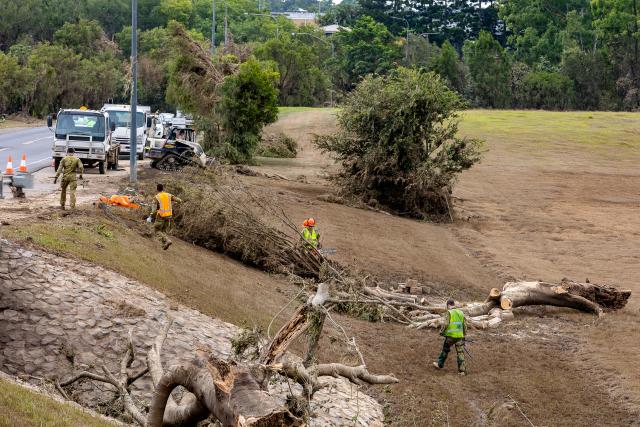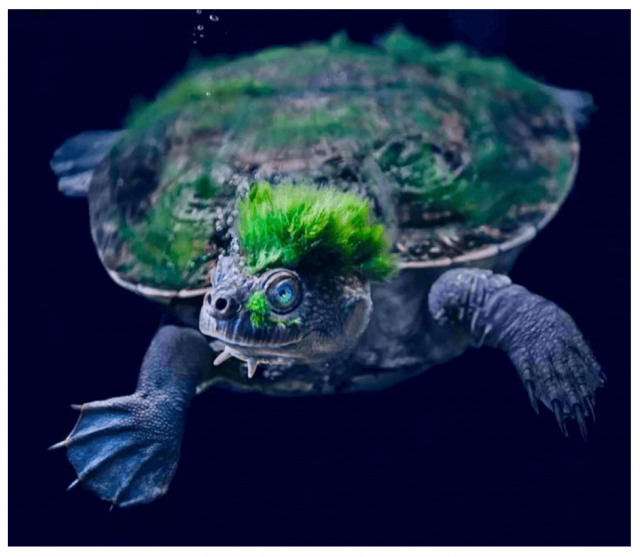
Threatened species in the Mary River at Gympie will benefit from several projects in the wake of the 2022 flood events.
Joint funding from both the State and Federal Labor parties have pooled nearly $40 million for the Environmental Recovery Program, which is a cost-shared program under the Commonwealth-State Disaster Recovery Funding Arrangements, (DRFA) focused on the recovery of waterways and biodiversity in affected communities.
Several groups received a share of more than $1.6 million to improve resilience and accelerate waterways’ recovery after severe flooding events affected south east Queensland communities between January and March 2022 at caused significant damage to waterways.
These are home to some of the state’s most vulnerable animal species including the lungfish, white-throated snapping turtle, Mary River turtle and the Mary River cod.
Top among the projects to receive funding is the Mary River Catchment Coordination Association Inc, The Noosa & District Landcare Group Inc, Tiaro & District Landcare Group, Noosa Shire Council (around Skyring Creek) and the Burnett, Mary Regional Group.
The Mary River Catchment Coordination Association Inc will use the funding to assess impacts and undertake habitat recovery for endemic and threatened aquatic species like the critically endangered White-throated snapping turtle, the endangered Mary River cod and Mary River turtle, and the vulnerable Queensland lungfish.
Noosa & District Landcare Group Inc will focus on restoring and revegetating areas which suffered vegetation damage, including threatened plant species around Six Mile Creek within the Mary River Catchment, and Kin Kin Creek Catchment of the Noosa River.
The Tiaro & District Landcare Group will be measuring mortality rates and the health of adult and juvenile endangered Mary River turtles as they navigate the post-flood ravaged riverine environment. That project will collect data on the impact of consecutive high-flow flood events upon freshwater turtles.
The Noosa Shire Council plans to use their funding to revegetate a council-managed reserve that suffered significant stream bank erosion at Skyring Creek with a mixture of native local riparian tree, shrub and ground cover species to stabilise the eroded bank and make it resilient to future flood events. The improved water quality will benefit a range of threatened species including Mary River Cod, Lungfish, Mary River Turtle, Giant barred Frog, Cascade Tree frog and Tusked Frog.
The Burnett Mary Regional Group will survey areas across the catchment to establish a baseline of information from which to guide future investment in species and habitat management.
Federal Minister for Emergency Management, Murray Watt said recovery from such significant floods was a long-term commitment.
“Environmental recovery from the 2022 floods is a key priority for both Governments,” Minister Watt said.
“We’re proud to partner with the Queensland Government to support … these crucial conservation and recovery projects where they are needed most.
“Not only will these projects enhance recovery of natural areas and waterways to support threatened aquatic species, they will help build the resilience of these areas to withstand future natural disasters.”
Queensland Minister for the Environment, Leanne Linard, said the severe flooding events of early 2022 caused widespread destruction to Queensland’s waterways including the Mary, Burnett and Bremer rivers, which are home to some of our most iconic and threatened aquatic species.
“Some south east Queensland waterways, including the Mary River catchment, were impacted by multiple severe floods within the space of weeks, taking a serious toll on the riverbanks and biodiversity,” Minister Linard said.
“This funding will support locally-led projects to help us understand the ongoing impacts of the floods on these species, while carrying out recovery efforts to support our unique biodiversity well into the future.”
For information on these projects please visit Environmental Recovery Grants or the Queensland Reconstruction Authority’s website at www.qra.qld.gov.au







